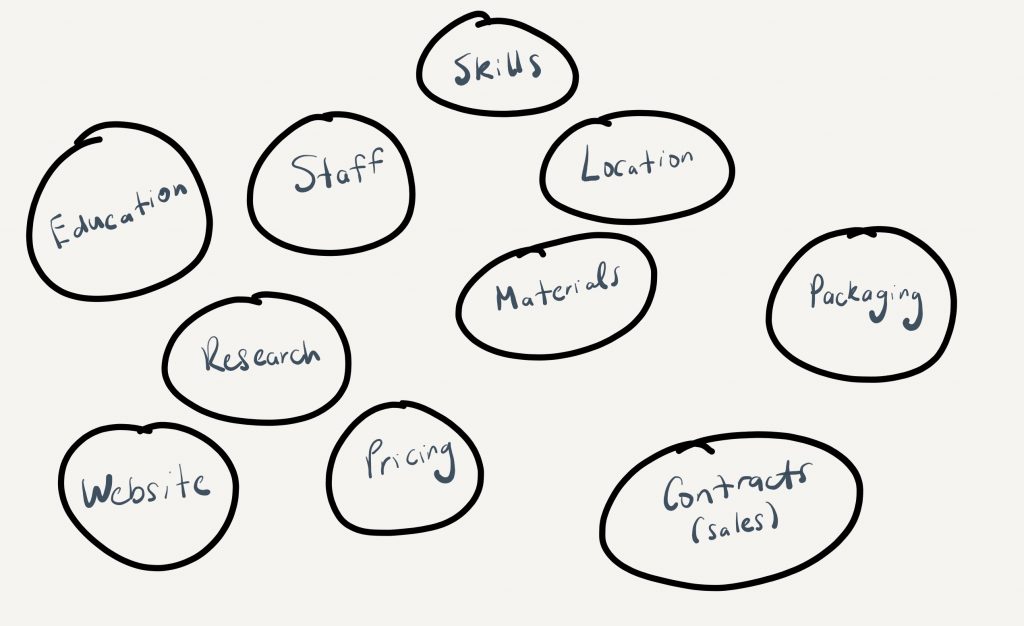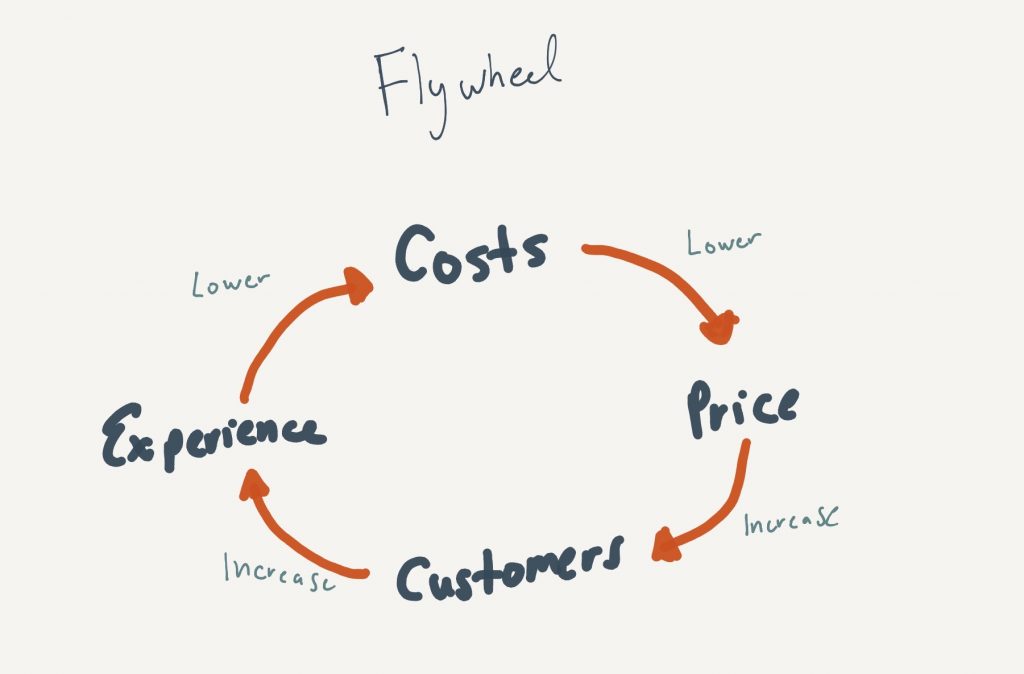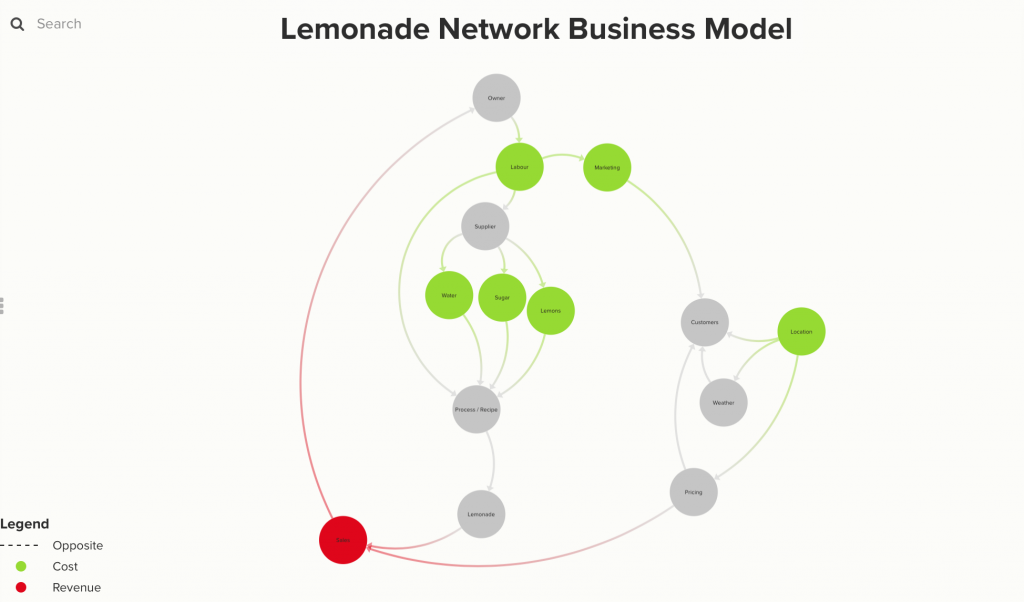Surviving in the new digital economy has required a new set of tools. As companies—equipped with more data and more powerful tools—become smarter, staying competitive is more challenging. Companies need to be aware of how they fit into their competitive arena and evolving to keep up. There are a variety of frameworks that have emerged over the years that enable us to map and understand: the context in which we operate, the fundamentals of our business, and even the customer experience. I am not suggesting these tools are broken. Each has served its purpose in history, but as competitive demands grow and evolve, so must our tools.

One place we can look for new ideas is how technology companies are thinking about these challenges. A new school of thought has emerged in this area around loops and the connected nature of products and growth. Inspired by feedback loops in systems theory, this approach aims to see reinforcing loops in products and behaviour to identify a model for growth. Brian Balfour’s Reforge teaches courses on identifying, modelling, and creating these growth loops. As our strategic literacy grows, we can apply new lenses to businesses to identify new opportunities.
The goal of this initial essay is to explore how we can create a new model of a business to uncover new ideas and insights. As such, I’m less concerned about developing a more formal framework to be replicated widely.
A business is a network
A company is an interconnected system. It has products, customers, and staff, operating within a dynamic competitive environment. Each of these elements has its own properties and relationships, interacting with the other elements in positive or negative ways.

To be able to analyze and dissect something, you must first make it visible. To do so requires having fluency and a vocabulary in the medium. For us, that will be businesses, systems thinking, and how they grow. To better understand a business and help it grow, we must visualize each aspect of it. Existing frameworks fall short when it comes to this; this is the core idea and insight I want to spend some time exploring.
In The Content Trap, Bharat Anand starts to work towards the idea of a new approach but never really gets to it. He covers three types of connections that are important to consider in a business: User Connections, Product Connections, and Feature Connections.
- User Connections: How does your customer base relate to one another and potentially create value within your product?
- Product Connections: Can you think of your product as one node in an ecosystem or product portfolio? How can you build a complement for your product?
- Feature Connections: What is the inner and outer context of your organization and product? How will that impact your strategic decisions?
A traditional approach to understanding a business wouldn’t reveal these connections and lenses. We need something new. Anand seems to suggest these connections as the basis of technology companies, but he never makes it an assertion and pursues it further.
A business is an interconnected system within a broader ecosystem of competition, society, and the world. Canonical strategic frameworks miss these connections. Tools like the PEST analysis, Porter’s five forces, and the Business Model Canvas isolate important aspects into their little boxes, often literally, and portray a business and its surrounding context as a rigid entity. In reality, each component of a business is tied to and impacted by the others. Without visually drawing these connections, it’s easy to miss opportunities and a deeper understanding of how your business operates and where you can continue to grow and succeed. You start to understand where you might find your moat, flywheel, and growth loop.
The business model canvas lacks relationships

One of the most significant advances in the startup/business planning world was the Business Model Canvas. The business model canvas is a document for planning our business model. It consists of 9 boxes (listed here) that represent the key elements of a business. Filling it out helps you think through each piece in detail, before deciding if you should pursue an opportunity. It is seen as more valuable than a business plan because a company is fast-moving and ever-changing, especially during its startup stage. A business plan has too many assumptions and quickly becomes outdated. The canvas’ reductive nature allows its users to focus on the fundamentals of their company in a structured way. But is it the best reflection of the dynamism of these companies? Where are the connections within your business model? I have found its resolution too low for exploring the full depth of a business. The Business Model Canvas is useful for covering the basics, but how does the company work? More importantly, how does it grow? It’s hard to discern this without a more connected diagram.

My proposed approach attempts to shine a light on the inner workings of a business. Its goal is to increase the legibility of a company by way of transparency; we cannot improve what we cannot see. Without a clear line of sight, we have an incomplete picture. We will miss opportunities for growth or areas worth pursuing.
Modelling your business as a system
If our tools are lacking, what can we do? Create our own. Thankfully, the notion of diagramming a system is not new. If we carry the approach over to understanding our businesses and start modelling them as systems, we can better understand key elements of them, such as feedback loops, bottlenecks, and hidden connections.
Introducing The Network Business Model
Currently called a “Network Business Model,” this diagram adds a new level of resolution and complexity to a company. We visualize each element of a business and the connections between them. These show relationships between the moving pieces and where related and reinforcing behaviour exists. The elements you choose to include depend on how well you know the business and how deep you wish to go.
Here is a simple example of a connected model for a lemonade stand. You can see the full view here. We can already start to see some of the moving pieces that we might initially miss such as how location might impact price, costs, and potential customers. I am trying a tool called Kumu for building these.
By drawing our business in this way, we start to be able to do things like:
- See hidden connections, which may appear obvious in hindsight
- Identify feedback loops
- Test potential changes and understand their cascading effects
How to Start to Thinking in Systems
This approach is going to require ongoing practice and iteration as a business owner. It’s less of a straightforward approach and more of a way of thinking, not a one-size-fits-all framework. By mapping your company at a high level, you can add additional details and elements over time to reveal new levels of connections you previously missed.
“All system diagrams and descriptions are simplified versions of the real world. we choose how much complexity to look at”
Thinking in Systems, Donella Meadows
It’s up to you to draw the boundaries of your system somewhere; otherwise, you will spin in circles trying to model the world. You need enough detail to reveal connections but need to balance time spent. With practice, you will learn the right level of resolution you need to properly understand and analyze a business.
This piece was inspired by Reforge, The Content Trap, Thinking in Systems, Notes on the Synthesis of Form, and our work at Versett. I am going to continue to explore this idea, refine the approach, and apply it in upcoming posts in different ways. It’s just a theory right now, so I will continue to apply it in various scenarios, such as analyzing existing businesses. In the next post, I will examine a more complex business to show how this approach scales.

